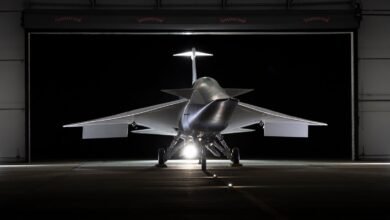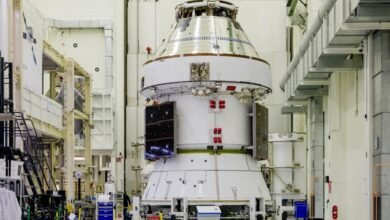NASA’s Test Flight Paves Way for Supersonic Travel’s Return

▼ Summary
– NASA’s X-59 supersonic jet completed its first flight in California, designed to reduce sonic boom noise to enable future supersonic travel over land.
– The jet, built by Lockheed Martin, took off from Palmdale and landed near Edwards, validating airworthiness and safety during its hour-long inaugural flight.
– Current US regulations prohibit supersonic flights over land due to disruptive sonic booms, which limited the Concorde to supersonic travel only over oceans.
– The X-59’s unique design features a long nose and top-mounted engine to break up pressure waves and direct sound upward, producing a quieter “sonic thump.”
– NASA aims to provide data from the X-59 to help manufacturers develop quieter supersonic aircraft for commercial use.
A new era for overland supersonic travel is on the horizon following the successful first flight of NASA’s experimental X-59 Quesst jet. This groundbreaking aircraft is engineered to drastically reduce the noise associated with breaking the sound barrier, potentially clearing the way for future commercial flights to travel faster than sound across populated regions. The early morning test over California’s Mojave Desert marks a critical step toward overturning long-standing bans on supersonic overland flight.
Constructed by Lockheed Martin’s Skunk Works, the X-59 departed from US Air Force Plant 42 in Palmdale. NASA’s chief test pilot for the program, Nils Larson, was at the controls for this inaugural journey. The flight focused on verifying the aircraft’s fundamental airworthiness and handling characteristics, concluding with a safe landing approximately one hour later near NASA’s Armstrong Flight Research Center in Edwards.
The acting NASA Administrator, Sean Duffy, described the X-59 as an emblem of American innovation. He emphasized that the drive to push boundaries, to travel farther, achieve greater speeds, and do so more quietly, is deeply embedded in the nation’s character.
Current regulations in the United States prohibit commercial aircraft from flying at supersonic speeds over land. The reason for this ban is the disruptive sonic boom produced when an aircraft surpasses the speed of sound. This loud shockwave can shake buildings, rattle windows, and startle communities. The Concorde, historically the only successful commercial supersonic airliner, was consequently restricted to supersonic flight only over ocean routes.
The physics behind the sonic boom involve pressure waves. As an aircraft nears the speed of sound, these waves accumulate around its surfaces. Once the plane accelerates past Mach 1, these areas of high pressure merge into powerful shockwaves that manifest as the characteristic dual thunderclap heard on the ground.
The X-59’s revolutionary design is key to its quiet operation. Its exceptionally long and slender nose, making up nearly one-third of the aircraft’s total length, is engineered to prevent pressure waves from combining into a single, loud boom. Furthermore, the engine is strategically positioned on top of the fuselage instead of underneath. This placement helps maintain a smooth underside to minimize shockwave formation and directs most of the resulting sound upward away from the ground, creating what is described as a gentle “sonic thump.” NASA aims to provide key data to aircraft manufacturers from this program, supplying them with the necessary information to design and build a new generation of quieter supersonic passenger planes.
(Source: Ars Technica)

